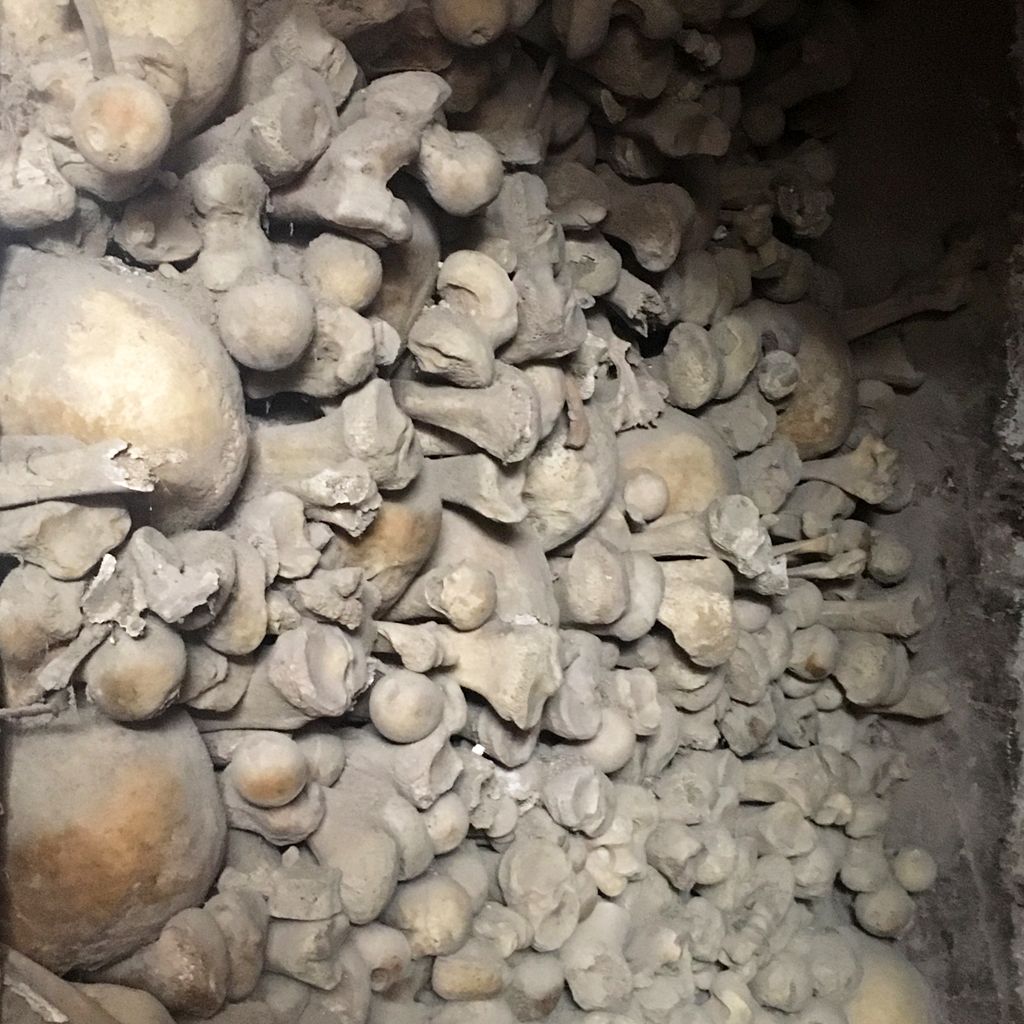
234/377: Padria
INSPIRATION

Padria. Upon my arrival, ancient houses of volcanic stone and yellow sandstone shine in this very strong summer light. Antonio, the former mayor of the village, kindly booked me a b&b for the night and recommends a few places to visit.
The church of Santa Giulia Martire, on the main square, is in Aragonese Gothic style, beautiful outside, also with its blocks of yellow sandstone. I watch it, walking around the garden all around, once a cemetery, still with a green lawn despite the heat. But the wonder is inside, because unlike other churches where the gaze turns upwards, here the gaze goes downwards, towards a part of transparent floor, on which transparent Plexiglas chairs rest so as not to obscure what is below.

Here I can read the history, very ancient, with the remains of a nuragic well, and those of an early Christian church, born on a Martyrion, the venerated tomb of a Carthaginian martyr identified as Iulia. Then the medieval church was built on these, and later the current one from 1520. A pluri-millennial history. I remain silent for a while. There is no one inside or outside and I enjoy the unrolling of the millennia in my head.
In the afternoon I meet the civil service guys, Luisa, Mendy, Fabio and Federica. Enthusiastic they guide me through other important pieces of history of this ancient village, which is spread over three hills: San Giuseppe (where the Nuragic village of the same name is located), San Pietro (on which a Madonna statue watching over the village is visible) and San Paolo.

We go up to the latter, the most important because there are the remains of a baronial palace, Su Palattu, once belonging to Pietro De Ferreras, baron of Bonvehì. Here too, as in Santa Giulia, the archaeological superimpositions tell the millennial history. Remnants of the Roman era appear here and there, especially capitals. The palace is built on Phoenician-Punic remains. The guys explain to me that most of the stones and lintels were taken to build the houses of the village. I lean over the railing observing the houses below, intending to go look for some of those lintels.

Back in the village centre, the guys take me to the Archaeological Museum, set up in the former “wheat bank”. Here I admire pre-nuragic and nuragic remains, found in the many nuraghi in the area. The most beautiful finds, however, are not here: an important bronze can be found in the archaeological museum of Cagliari, while a nuragic spacecraft and a votive sword are found in the Sanna museum in Sassari. And then Roman finds, and images of the bridges of this period that testify to the importance of this passage area.

The last stop is at the Franciscan friars convent, adjacent to the church of Santa Maria degli Angeli. We enter and walk on marble floors and stairs worn by centuries-old climbs and descents, visiting the various rooms and dormitory cells. And even here there is a nice surprise that projects me back into a very remote past: an ossuary, containing dozens of bones and skulls cemented by time, a time that here in Padria seems to have crystallised in the architectural structures that make it up.
SOUND FRAGMENTS

SARDINIAN SHORT STORIES

Returning to the b&b Lo Shardana, I take a tour of the streets of the centre, where I find confirmation of what I was told on the hill of San Paolo: ancient and decorated architraves and lintels embellish the entrance and windows of many houses. It is said that digging under the houses would surely reveal the remains of the flourishing Roman city of Gurulis Vetus.
Legend has it that a storm swept over the Roman town and boulders and mud spilled from the hills which destroyed everything. The surviving inhabitants left the town in search of a safer place, heading south. It seems that a young man named Julio, admiring the similarities of a valley at the foot of the Montiferru, proposed to stop here, where Gurulis Nova was founded, the current Cuglieri.
But the nostalgia for the native place was so great that, once old, Julio decided to return with a group of young people to his homeland. Arriving and seeing the three hills, and the beauty of this area, Julio could die in peace by exclaiming “Homeland!” (Patria in Italian.) The young people, thinking of old Julio and their fathers, thus decided to found a new country and call it with this word.